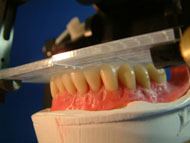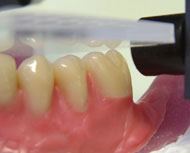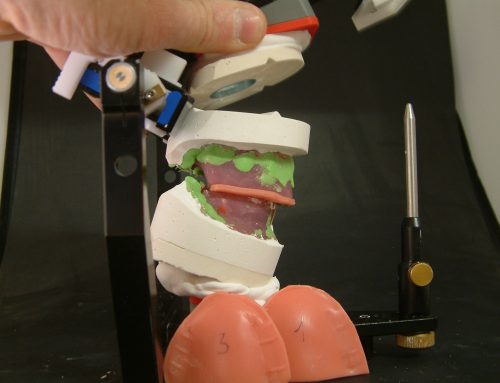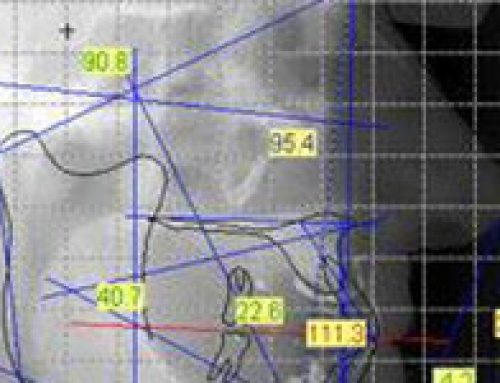Occlusal plane
e determine the occlusal plane combining the incisal edge of the lower first incisor and the distobuccal cusp of the lower first molar. The average value of the occlusal plane inclination is 12,87° in relation to the axis-orbital plane. In prosthesis we use generally an occlusal plane that measures from 8° to 12°, but in order to determine the correct inclination, it’s important to consider the condylar path; in fact the steeper it is, the steeper the occlusal plane inclination will be; instead a less steep condylar path will need a flatter occlusal plane. Wrong occlusal planes can cause occlusal interferences both in lateral and in protrusive position; we have to know that a flat occlusal plane causes interferences in front sectors, while a too steep occlusal plane causes them in back sectors. A right inclination of the occlusal plane helps in the stabilisation of the removable prosthesis. As we said, we determine the occlusal plane through the plane that develops combining the lower incisal edge of the central and the distobuccal cusp of the lower first molar; the between them included teeth need a correct distance from the plane: this distance determines the curve of Spee. In general, the lower incisors will touch the plane. The canine will pass him of 0,5 mm. The first premolar will touch it lightly at a distance of 0,5 mm; the second premolar will do it at a distance of 1 mm; the mesiobuccal cusp of the first molar will touch slightly again the plane at a distance of 0,5 mm and the distobuccal will pass the plane of 0,5 mm. The Reference SL articulator is provided with a very useful accessory that determines the occlusal plane inclination.







